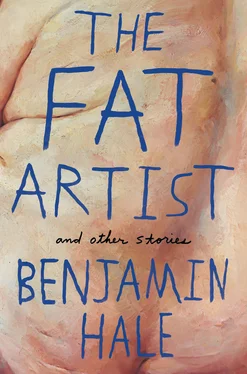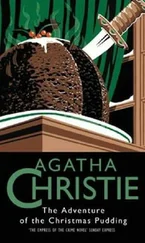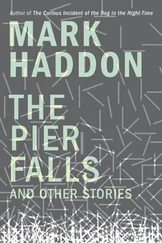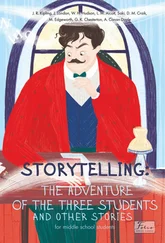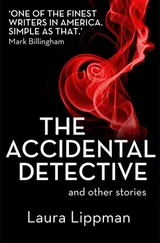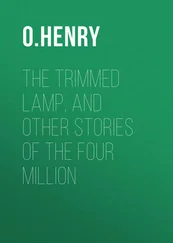The attendees of the VIP opening crowded at my bedside like family round a dying patriarch, munching the hors d’oeuvres they cradled in folded napkins in their hands, sipping champagne and murmuring with reverently muted conversation, while I sat nude on my enormous purple bed and ate.
My opening meal began with a bottle of ’97 Château d’Yquem and a modest tomato soup with minted crème fraîche, peekytoe crab, and julienned bacon. This was followed by a plate of langoustines and snails glazed in a light Hollandaise with cracked Basque pepper and parsley. I ate every one of them, scraping the puffy white meat from the sharp ridges of the lobster carapace, delicately sucking the slick mollusks from their shells. Following this, a course of veal cappelletti and truffles stuffed with ice-filtered lamb jelly, sweetbread, and mussels. At this point I swallowed the last of the Château d’Yquem and switched to a velvety yet robust 200 °Châteauneuf-du-Pape recommended to complement my main course, which one of my tuxedoed waiters forthwith displayed to me with a flourish while the other swept away the remains of my previous course, and I wiped my oily fingers clean with a moist towelette: an entire goose, braised in a champagne-butter reduction and stuffed with chestnuts, shiitake mushrooms, and venison sausage. For maximum effect two silver candelabras softly illuminated my meal, and I ate with fork, knife, and spoon, although I neither wore a bib nor draped my lap with a napkin, which would have obscured part of my fat body, for which I wanted maximum visibility; it did not take long before I took to wiping my hands on my plush purple bedsheets. Crumbs tumbled between my legs; drippings of sauce streaked my belly. It took me about an hour and a half to devour the entire goose. I had to work very slowly so as not to overstuff or exhaust myself. I did once have to move my bowels in the middle of the meal. This is something I would learn over time to feel less squeamish about. It is an oddly exhilarating sensation to defecate in full view of spectators while actually eating at the same time: to eliminate the arbitrary and bourgeois separation between not only the physical, but also the psychological spaces designated for the body’s admission versus evacuation of material. IXMy excrement, liquid and solid, simply slipped out of me when it was ready to go, with minimal effort on my part, and was immediately whisked away unseen, vacuumed straight out of my body via the tubes concealed beneath me. I don’t think anyone present even noticed. When I had slurped the last remaining edible sinews from the last remaining bones and ligaments of the goose, the dish was borne away and immediately replaced with a glass of forty-year-old tawny port and my dessert: a whole cheesecake, which I hacked apart and shoveled into my mouth one dainty forkload after another, dampening my bites with glass after glass of port. By the end of the night, this cheesecake took me longer to finish than the main course. Several times I nearly vomited, but each time I felt the bile racing up my throat, I clenched my mouth shut tight, steeled myself, closed my eyes, swallowed, and recovered — ready to eat on.
By the time I had almost finished the cheesecake, most of the VIP opening’s invitees had left. I was feverish, ill, sweating profusely, slightly delirious. As I sat nude on my giant purple bed, the edges of things had begun to acquire a silvery haze, like a faraway desert horizon, and my vision of the world before me kept sliding off its axis, stopping, getting back on, sliding off again. The exhibition was closing for the night, and my scale reported that on that first night, I had gained 23 lbs (10 kg) in one meal alone, finishing out the evening at a formidable 516 lbs (234 kg). Although I knew that in order to reach my goal of becoming the heaviest human being in known history I had approximately another 1,200 lbs (544 kg) to gain, and although I very well knew much of this initial weight gain was only temporary, as it would soon be evacuated from my perilously engorged digestive tract through the rubber vacuum tubes connected to my body’s lower egresses, I felt then an enormous inner swelling of pride at my achievement.
The last stragglers left the museum employees to clean up after the party as I sluggishly chased the remnants of my cheesecake across the platter with my fork and nipped at the dregs of the port. From my bed, in delirium, I watched the museum employees pick up the discarded fingerprint-fogged, lipstick-smudged wineglasses, sweep away debris with push brooms, dismantle the hors d’oeuvres table, and throw out the basinful of tepid water that my champagne fountain/pornographic ice sculpture had long since become. As if from twenty feet under water I looked languidly at my waiters, who stood leaning against the outer glass walls of my exhibition chamber with their shirts now untucked and unbuttoned at the throats, and the flaps of their undone bow ties dangling down, as they joked and chatted. They were smoking cigarettes and blowing the smoke into the warm May air, and looking out across the dark expanse of Central Park and the Upper West Side’s glittering wall of light. They did not look back at me. Nor did they think to speak to me as they wheeled away my long glass dining table, misted it with Windex, and wiped it down with squeaky rags. I watched them sweep and mop the smooth concrete floor of my exhibition chamber while passing a bottle of wine left over from the opening back and forth between them, and I faintly heard them make plans to join some of the other museum employees for a drink after they were done with their work. When they had mopped the floor, one went to return the mop and bucket to a janitorial closet while the other surveyed the room for anything they might have missed, and, finding nothing, pulled the doors shut, snaked a heavy chain through the door handles, secured them with a padlock, and left — all without looking at or speaking to me or acknowledging my presence in any way. He was simply at work, and I may as well have been an inanimate object in the room. I settled my weight against the pile of pillows at my back and watched him go. From my vantage point, propped up on the plush purple bed of my own design, inside my glass exhibition chamber atop the roof of the Guggenheim, I could see clear across the park, and gaze at the towering luminous rectangles of Midtown Manhattan to the south. Jets flew low overhead, red and green lights blinking, engines droning low streams of colorless noise as they gently descended toward JFK and LaGuardia. The city at night sparkled and hummed with heat, with light, with life, ardent life.
• • •
In the morning I awakened to the clinking sounds of a museum employee fiddling with the padlocked chain on the doors to my exhibition chamber. That day my exhibit was to open to the general public.
The roof was thick with humanity all day, from the museum’s opening at 10:00 A.M. until it closed at 5:45 P.M. The exhibition was hotly anticipated, as it had been hailed as a groundbreaking cultural event, preceded by a long campaign of advertising that had culminated with a massive billboard draped across the west-facing side of the Condé Nast Building. The opening-day visitors had purchased their tickets months in advance. The line to get into my exhibit coiled twice around the block, I’m told, with an average wait time of two hours. Once visitors made it into the museum, they were directed into two streams of traffic: one line to enter the regular museum, and the other line for those who had come only to view the Fat Artist. Still others had purchased tickets that allowed them to also see the exhibits in the rest of the museum before or after viewing the Fat Artist, and these people were allowed to choose their line, though most of them, for fear of not being able to make it to my exhibit later, chose to see me first. Velvet ropes corralled the line into the museum’s addition and stopped at the elevators, to which visitors were admitted in small groups of ten to twelve by museum employees who communicated with the staff on the roof through walkie-talkies that crunched and squawked in their hands. The elevators then ascended to the top floor, where staff herded the visitors outside onto the roof. And the people came, crowding into my exhibition chamber to watch the artist eat. Museum staff tried to keep the number of people on the roof to forty at most, but there were too few of them to properly police the behavior of the visitors, and the people thronged around my bed in such numbers that many were forced to stand outside of my exhibition chamber and peer in with faces puttied to the glass, breath blowing spots of fog. The late spring was slouching into early summer and the temperature was warm, and with the pulsing flux of sticky, sweating skin moving in and out of the room it quickly took on the thickly biotic aromas of a bath house, a public locker room, a zoo. Soon the interior of the box had become so opacified with condensation that it was difficult for those outside to see in. Tremulous beads of moisture gathered on the ceiling and dripped desultorily onto my bed, my body, my food. There was a constant, rushing din of people — so much humanity in all its vivacious grotesquerie — taking pictures, talking, giggling, pointing, watching me eat.
Читать дальше
